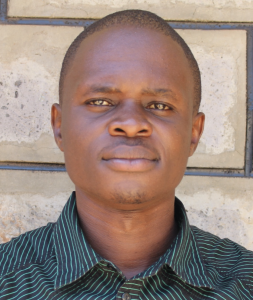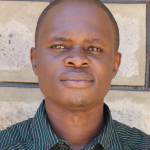Please note, original photos were taken before the pandemic.
Friends Kisasi Secondary School began as a community school in 2012. The Friends Church-sponsored school started with just 2 classrooms and a target of reaching out to the vulnerable members of the community. Today, Kisasi Secondary hosts 277 students and 17 teachers and staff.
All of them are affected by the severe lack of clean water on school grounds.
Currently, the school relies on a dug well without a hand pump. To help students pull water from the well, there is a small metal crank that attaches to a bucket with rope. Students use this to haul up water, then pour it into their own containers which they carry back to a central point on campus for drinking and kitchen use. The well pulley is hard and tiring work, and the container that remains tied to it grows dirty with algae and dirt as it is always left out, in the water, or on the ground. Students' containers are likewise dirty.
At the time of our visit, we saw how surface runoff drains into the well - a highly concerning sign of contamination. Teachers reported that the rate of water-related diseases is very high at Kisasi Secondary. Parents said they spend a lot of money on medication for their students, instead of using that money to pay their children's school fees.
"On different occasions, I have had sores on my mouth because of the unsafe drinking water. Sometimes in the afternoons, I have to persevere with thirst and end up having a headache due to the lack of water in the school," said Deputy Head Teacher Amatalo Kaiser.
There is only 1 small plastic drum used to store water on campus, so the students have to make many trips to the well throughout the day to try to meet their drinking, cooking, and cleaning needs. Students and teachers are asked to also carry water from home in the morning, which they must bring in addition to their books.
Students are arriving tired and late from their morning walk with water, and everyone is frustrated that their school cannot provide for this basic need. Pupils then miss more class time while pulling water from the well throughout the day. Students' academic performance and teachers' syllabus coverage are, consequently, lagging.
"The lack of clean, safe water is very inconveniencing for me. I have to carry drinking water from home and sometimes I forget to carry my water bottle to school. On such days, I get very dehydrated and feel disturbed," reported teacher Ms. Muyuka Lavenda.
What We Can Do:
Rain Tank
A 75,000-liter rainwater catchment tank will help alleviate the water crisis at this school. The school will help collect the needed construction materials such as sand, bricks, rocks, and water for mixing cement. We will complement their materials by providing an expert team of artisans, tools, hardware, and the guttering system. Once finished, this tank will begin catching rainfall that will be used by the school’s students and staff for drinking, handwashing, cooking, cleaning, and much more.
We and the school strongly believe that all of these components will work together to improve standards at this school, which will help lead to better student academic performance and will help to unlock the potential for these students to live better, healthier lives.
Handwashing Stations
There are a few handwashing points set up around the school, but there is rarely enough water to make them effective. Students therefore cannot wash their hands at critical times, such as after using the latrines or before eating lunch.
The student health club will oversee the 2 new handwashing stations we will provide, and make sure they are kept clean and in working condition. The club leaders will fill the handwashing stations with water daily and make sure they are always supplied with a cleaning agent such as soap or ash.
VIP Latrines
2 triple-door latrine blocks will be constructed with local materials that the school will help gather. 3 doors will serve the girls while the other 3 will serve the boys. All of these new latrines will have cement floors that are designed to be easy to use and to clean. And with a rain tank right on school property, there should be enough water to keep them clean.
Training on Health, Hygiene, COVID-19, and More
All primary and secondary schools are currently closed in Kenya due to the COVID-19 pandemic, but they are scheduled to reopen in January 2021. Once classes resume, we will schedule a training session with students, teachers, and parents. This intensive training will cover a wide range of topics including COVID-19 symptoms, transmission routes, and prevention; personal and environmental hygiene; and the operation and maintenance of the rain tank, latrines, and handwashing stations. There will be a special emphasis on handwashing.
Our team of facilitators will use a variety of methods to train, including participatory hygiene and sanitation transformation, and asset-based community development. We will initiate a student health club, which will prepare students to lead other pupils into healthy habits at school and at home. We will also lead lectures, group discussions, and provide illustrative handouts to teach health topics and ways to promote good hygiene practices within the school including handwashing and water treatment. We will then conduct a series of follow-up trainings before transitioning to our regularly scheduled support visits throughout the year.

 Rainwater Catchment
Rainwater Catchment
 Rehabilitation Project
Rehabilitation Project













































